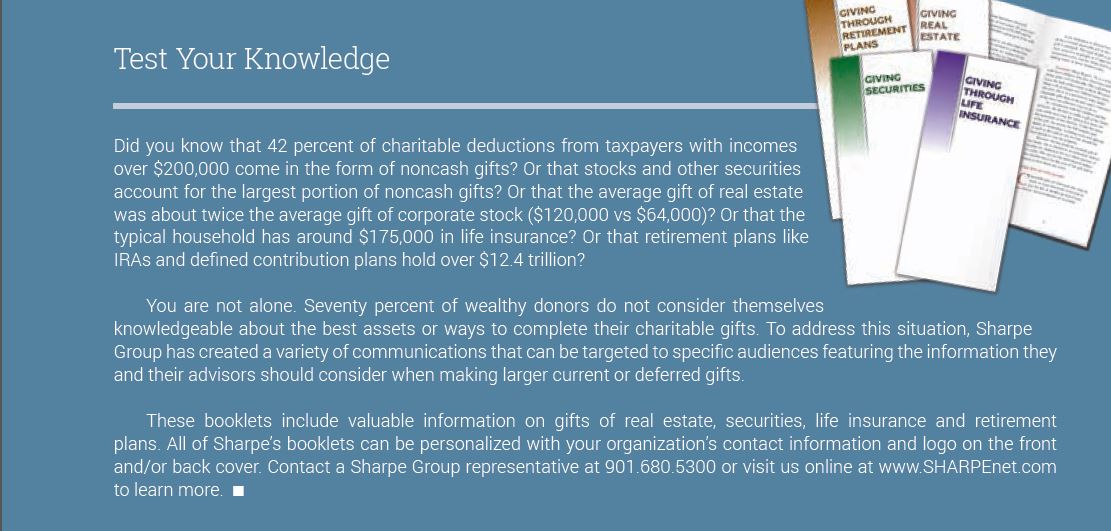 After reaching record levels in 2007, noncash charitable gifts dropped off significantly during the Great Recession, along with many other measures of financial stability. According to the most recent IRS study, however, noncash gifts are making a comeback.
After reaching record levels in 2007, noncash charitable gifts dropped off significantly during the Great Recession, along with many other measures of financial stability. According to the most recent IRS study, however, noncash gifts are making a comeback.
Are happy days here again?
In 2011, some 22.5 million individual taxpayers reported $43.6 billion in itemized noncash charitable deductions. Almost 8 million of these individuals reported a total of $38.7 billion on IRS Form 8283, which is required when the amount of noncash contributions exceeds $500.
Both the number of contributors and the amount of the contributions increased over the previous year.
As usual, contributions of corporate stock were the most popular type of noncash gift, representing 41.2 percent of noncash donations. In 2011, over 250,000 corporate stock gifts were reported, with an average donation of roughly $64,000. The average amount claimed for corporate stock gifts per return was over $140,000.
Gifts of real estate, land and easements were less frequently reported, but the average size of such gifts was much larger. Approximately 17,000 tax returns reported gifts of real estate and land, and the roughly $120,000 average real estate donation was almost twice the size of gifts of corporate stock.
While gifts of clothing and household items were the donations reported most frequently, the average value of gifts per donation was the lowest at less than $1,000.
With household wealth currently at record levels and the economy continuing to recover, the amount of both cash and noncash contributions should continue to grow. In addition to seeking cash contributions, savvy gift planners and general fundraisers should also promote noncash gifts. Remember, people give from both discretionary income and assets, and the largest gifts often come in a form other than cash. ■
Sharpe’s popular new seminar “Gift Planning Toolbox” features in-depth information on gifts of noncash assets as well as an exploration of the most common financial and estate planning tools to help donors make their gifts.


